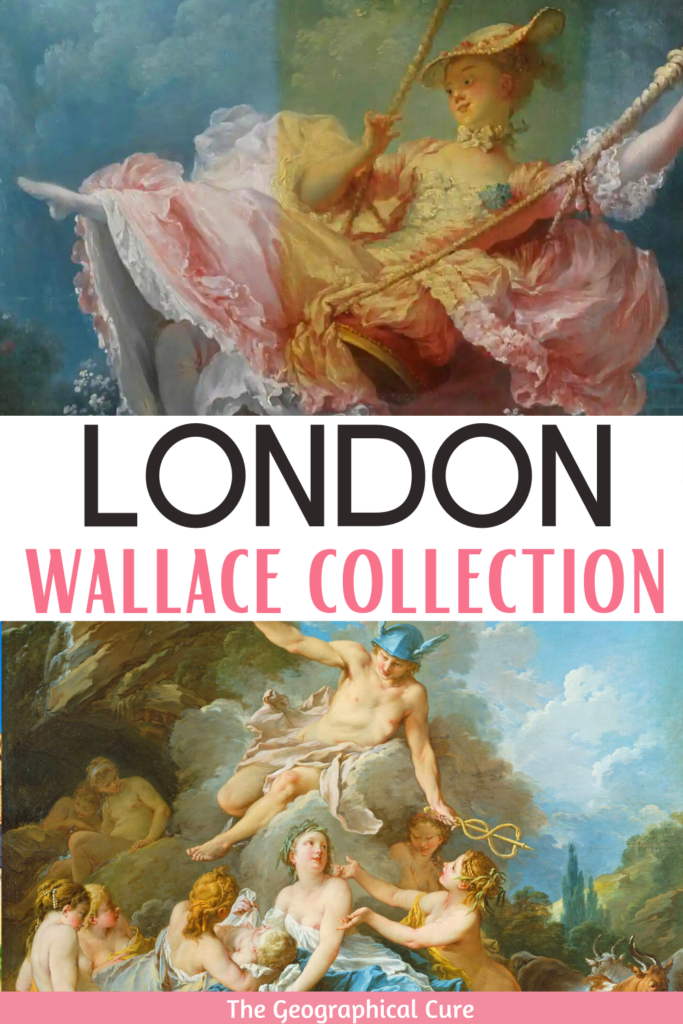If you’re looking for an off the beaten path museum in London, let me recommend The Wallace Collection.
I’ve been to London many times, but somehow overlooked this brilliant hidden gem museum on my prior visit. It really shouldn’t even be a hidden gem.
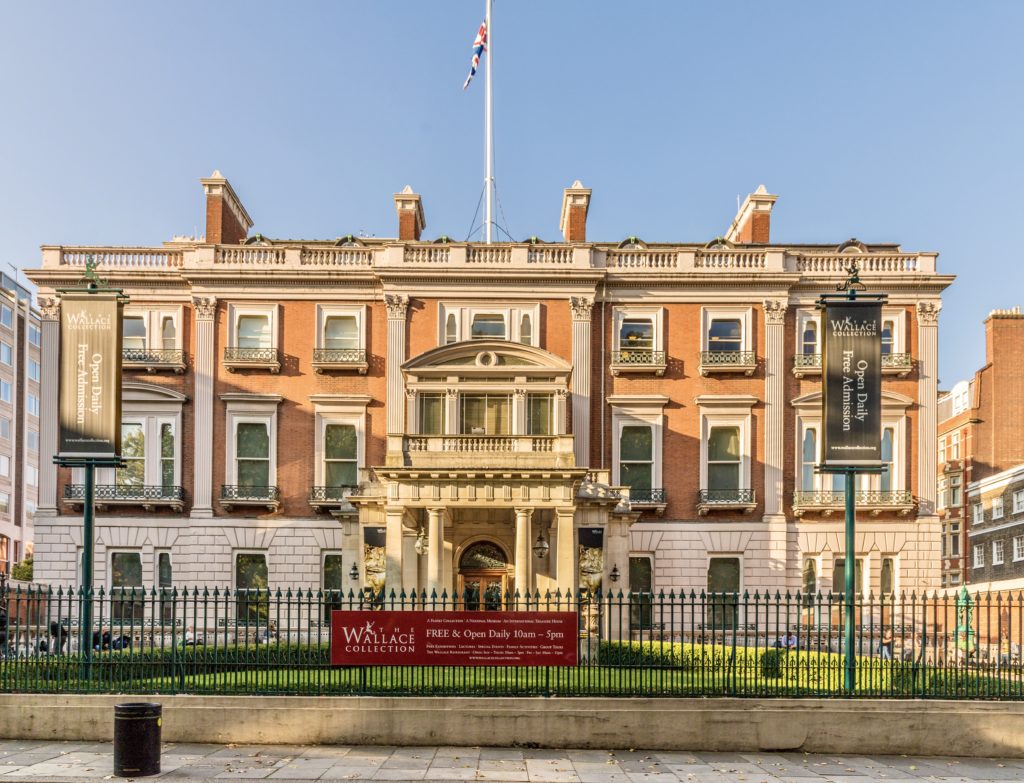
The Wallace Collection is one of the world’s best small museums, a treasure trove of art. But it’s somewhat pleasantly lost (except for locals) in London’s sea of amazing museums.
The Wallace Collection is housed in a palatial mansion. It’s a perfectly preserved in situ collaboration of art and period settings.
The museum has a fine collection of old Masters paintings and French furniture from the Louis XIV era. It’s word renowned for its 18th century French paintings, European paintings, and medieval armor.
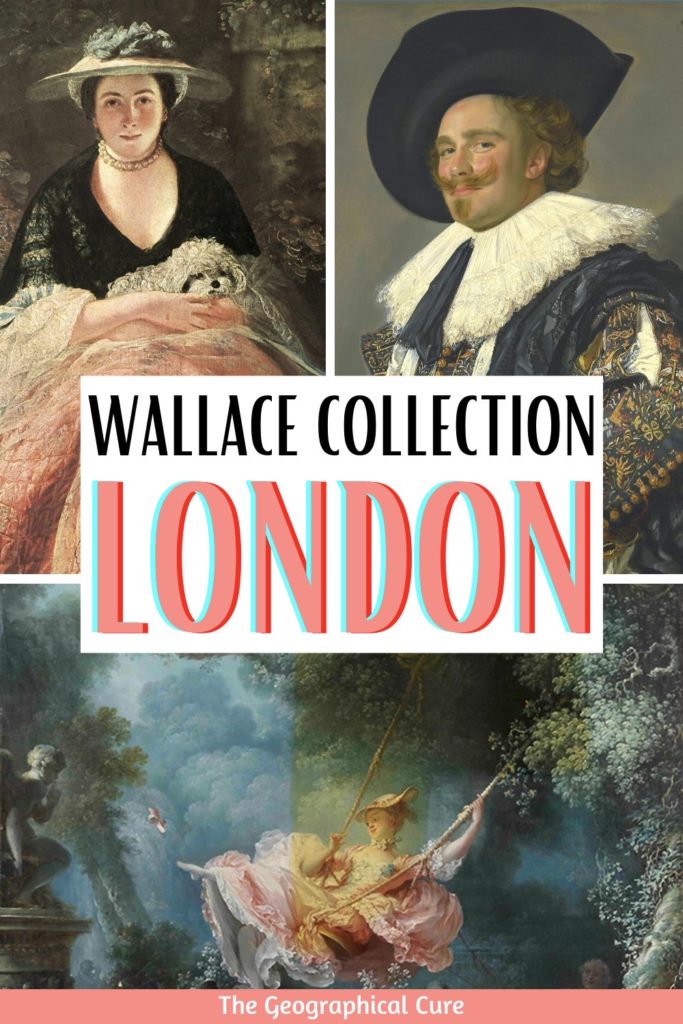
The museum lacks the standard white or gray walls you’re used to seeing in a museum. Instead, the colorful wallpaper, gilded frames, and porcelain compete for your attention.
There are even signs telling you not to sit on the “art.” It all makes for an unforgettable atmosphere and museum experience.
As you browse, you’ll find works by Rembrandt, Franz Hals, Diego Velazquez, Titian, and Canaletto. Plus, there’s a slew of works by Rococo-era artists like Watteau, Lancret, Boucher, and Fragonard.
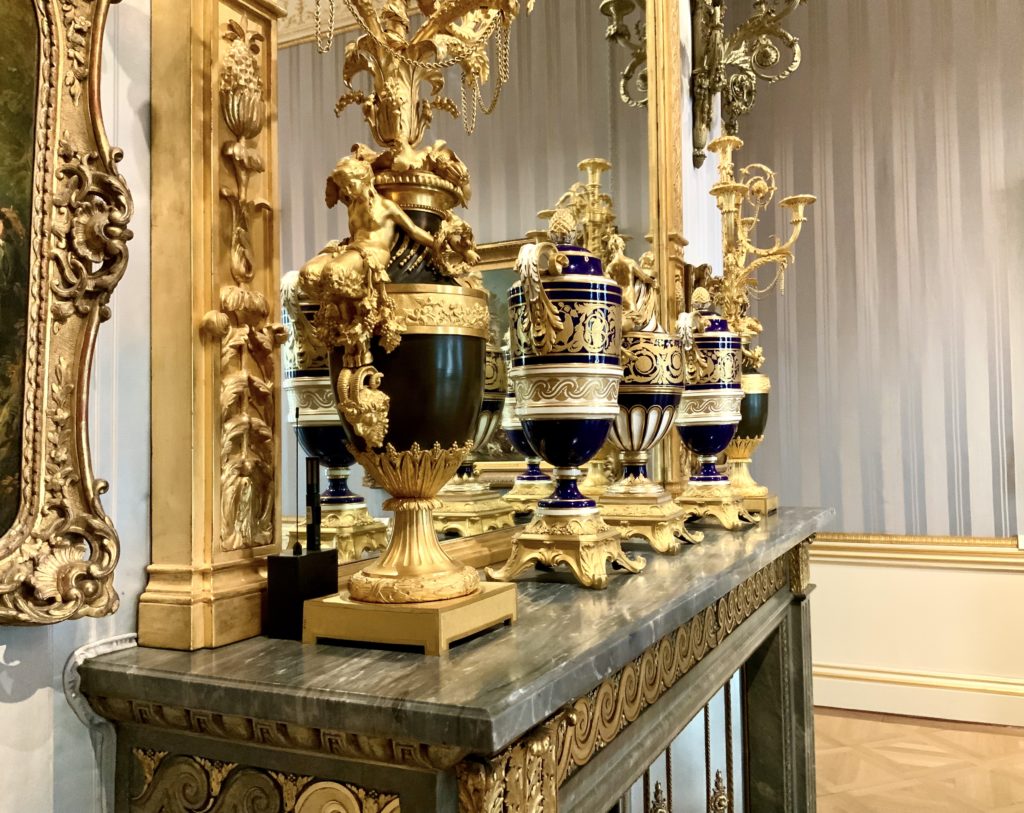
The Wallace Collection is set out in 24 rooms. It’s a “closed” collection.
That means nothing can be added to or subtracted from the museum. It must remain as is, untouched. This is similar to the Isabelle Stewart Gardner Museum in Boston.
In this guide, I give you an overview of the Wallace Collection, tell you about the must see masterpieces, and give you tips for visiting.
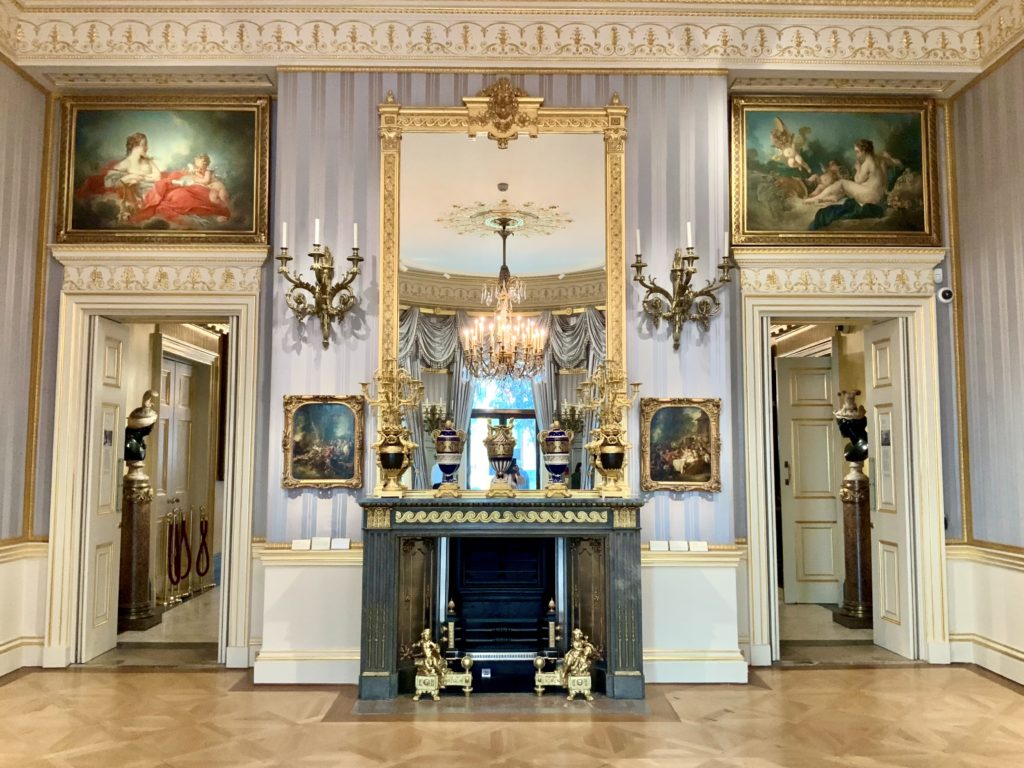
History Of The Wallace Collection
The Wallace Collection was founded by a family that were descendants of Jane Seymour, Henry VIII’s third wife. It was put together by the first four marquesses of Hertford and Sir Richard Wallace.
Wallace was the illegitimate son of the fourth marquess. His wife, Lady Wallace, bequeathed the collection to the nation upon her death.
The first and second marquesses began the collection. They acquired some important paintings by Canaletto, Thomas Gainsborough, and Joshua Reynolds.
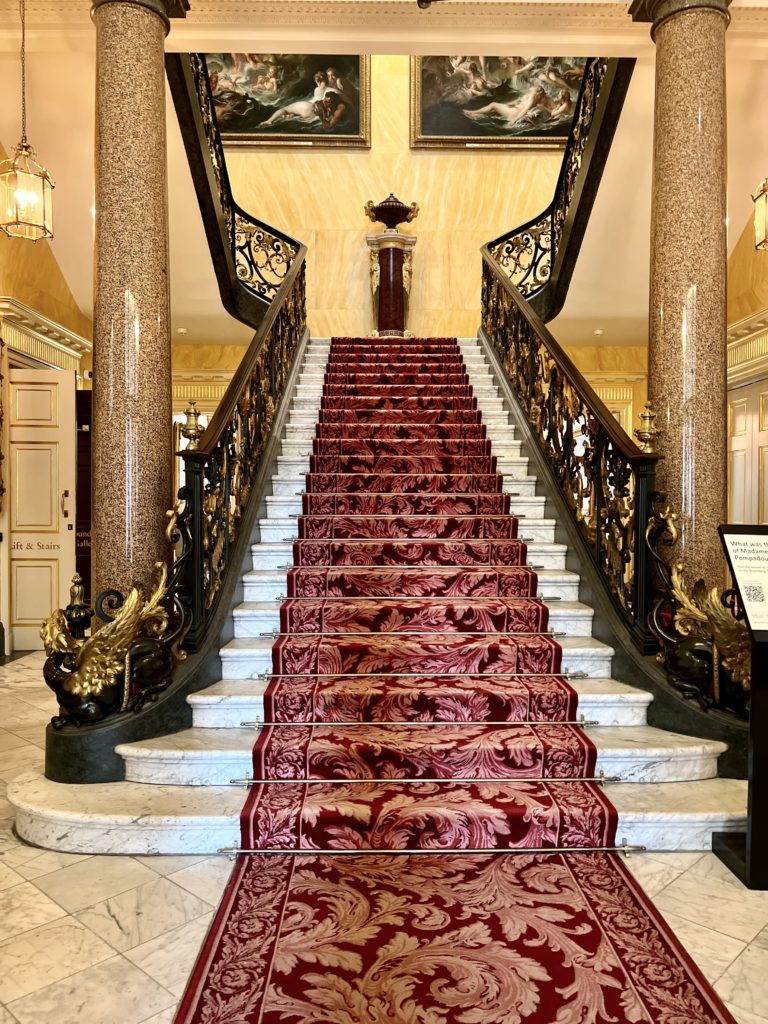
But it was the third marquess who was the first to show a real interest in art. He acquired the important 17th century Dutch paintings and much of the French furniture and Sevres porcelain.
The fourth marquess, however, was the greatest art collector in the family. His purchases defined what you see at the Wallace Collection today.
Growing up in France, he collected both French and English art, with almost no restraint. With a full pocketbook, he was famous for outbidding others at auction.
The fourth marquess was a bit of a rake who never married. But he did recognize his illegitimate son, Richard Wallace.
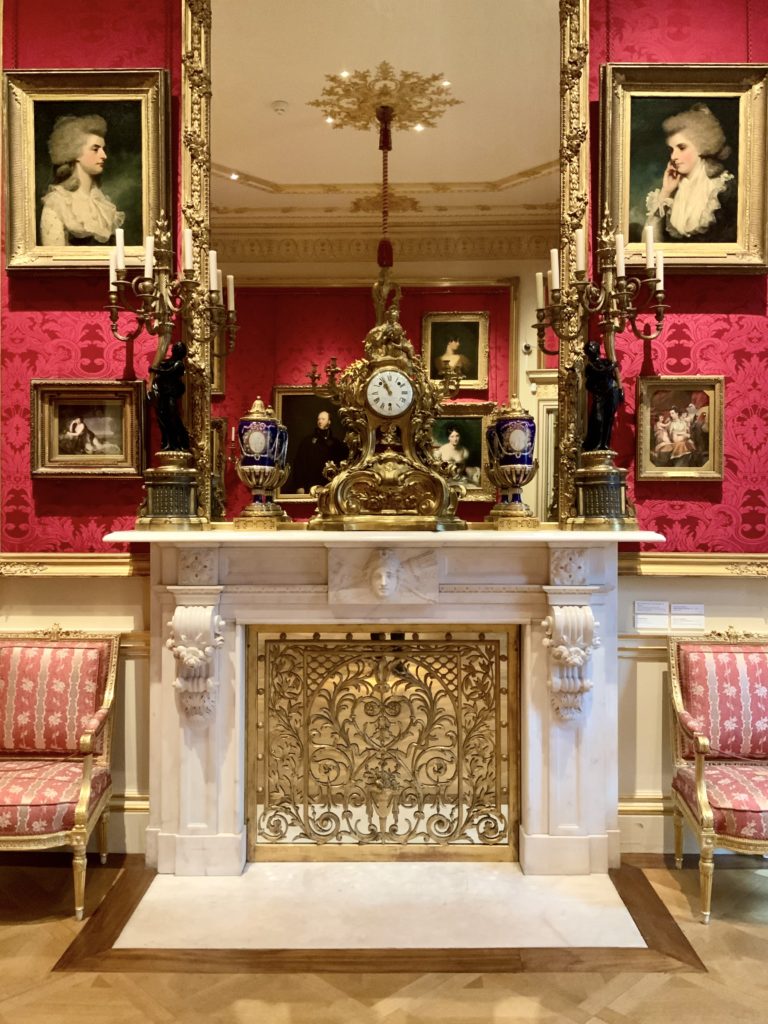
In 1870, Wallace inherited his father’s collection of art and his taste for collecting art. He renovated Hertford House to accommodate his own growing collection.
Wallace’s wife inherited his collection upon his death in 1890. Consistent with his wishes, she bequeathed it to the state.
However, she insisted on the caveat that nothing could be taken away from or added to the collection, making the collection an idiosyncratic time capsule.
Layout Of The Wallace Collection
The Wallace Collection is displayed in 24 rooms over 2 floors. The entrance hall has busts of the principal founders of the collection. The ground floor houses fine arts, medieval treasures, and armor.
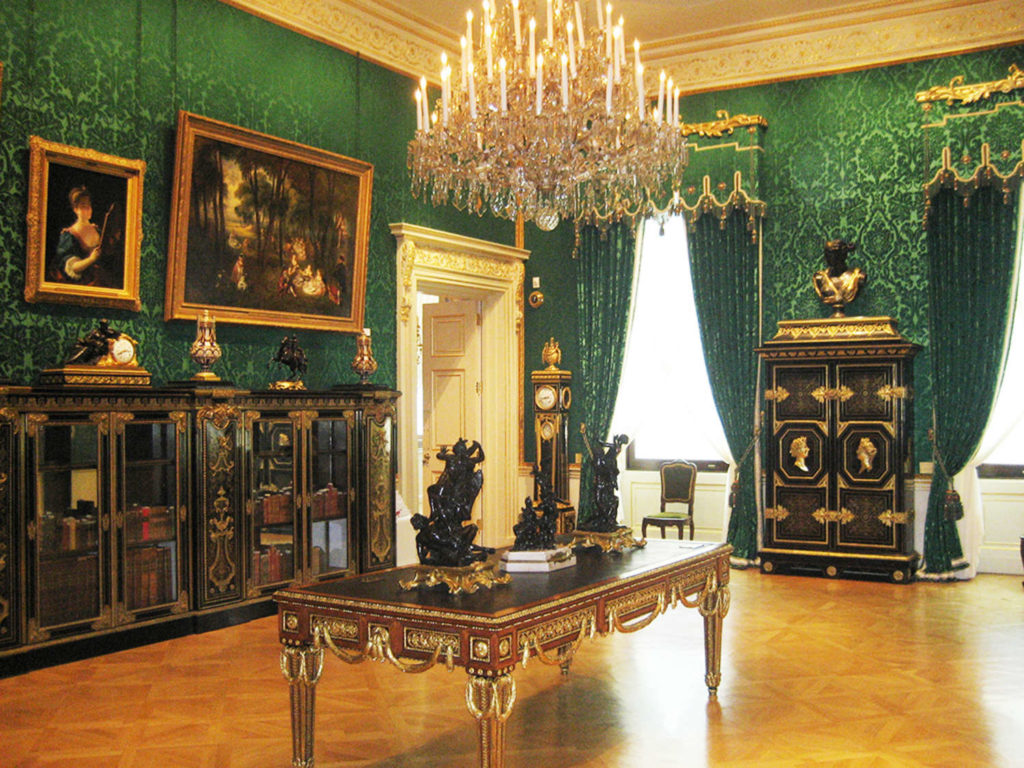
When you’re done on that floor, head up red carpeted grand staircase to the upper floor. The second floor has an even finer painting collection. Turn left to begin a clockwise spin around the rooms.
At the far end of the second floor is the Great Gallery. It’s the highlight of the museum. With stunning aesthetics, it displays masterpieces by artists from all over Europe.
Tickets And Tours For The Wallace Collection
As a national museum, the Wallace Collection is entirely free to visit, with a suggested five pound donation. If you plan to go on Friday through Sunday, you may want to reserve a spot online.
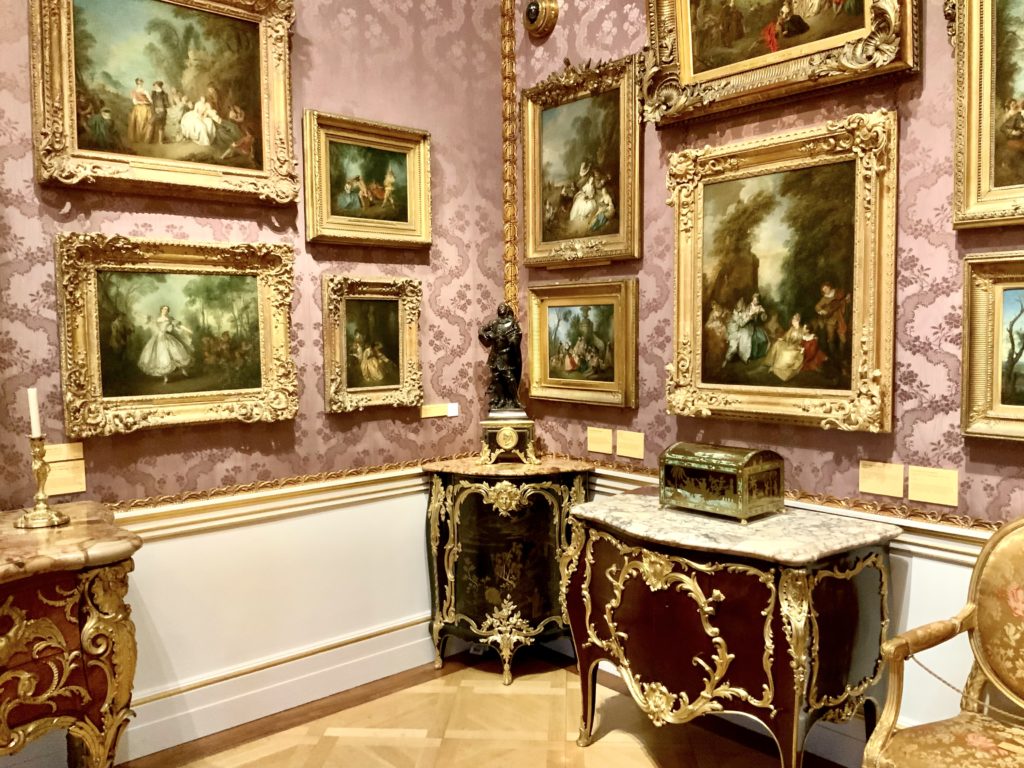
You can take a free 30 minute tour of the Grand Gallery on the second floor at 3:00 pm with a museum expert. You need to make a reservation for this tour at the front desk. You’ll be given a sticker to wear.
But the Wallace Collection is so vast, with so many masterpieces, that you may want to book a proper 3 hour guided tour.
You can also book an 8 hour guided tour of the Wallace Collection and other hidden gems museums. This fantastic tour takes you to other amazing museums of your choice, like the Courtauld Gallery.
Guide To The Wallace Collection: What To See
The Wallace Collection is full of masterpieces. Here are some of the must see highlights you should make a point to see.
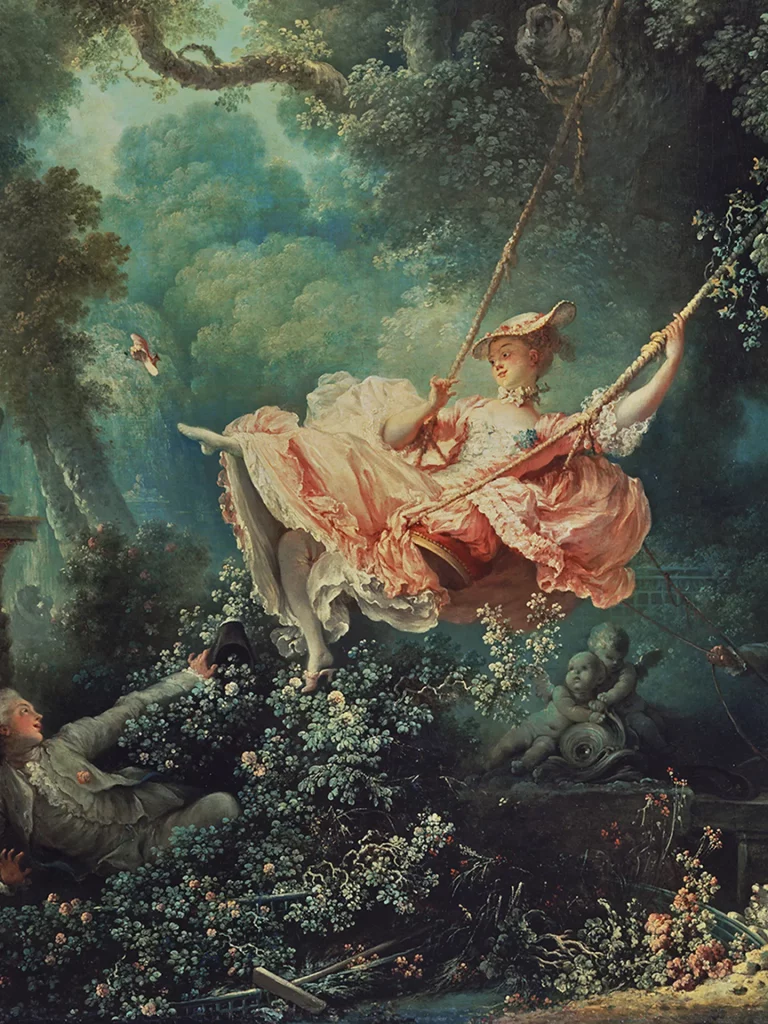
1. Fragonard, The Swing
The Swing is the most famous painting in the Wallace Collection and the most famous painting by Fragonard. It’s found in the beautiful Oval Drawing Room on the second floor.
Fragonard was an 18th century painter whose reputation rests on his charming love scenes. He was renowned for his use of light and color and expressive brushstrokes.
The Swing is classic Fragonard — a saucy subject executed with grace. It features a tantalizing woman decked out in a frothy pink gown. The painting is set in a fantastical park landscape.
The woman is being pulled on a swing by her husband, hidden in the shadows on the right. The poor man is unaware that she is having an affair with the man on the left.
The woman throws up her leg and flirtatiously kicks off a slipper, a sign of sexual abandon. Her gesture allows her love interest to peep up her swinging skirt.
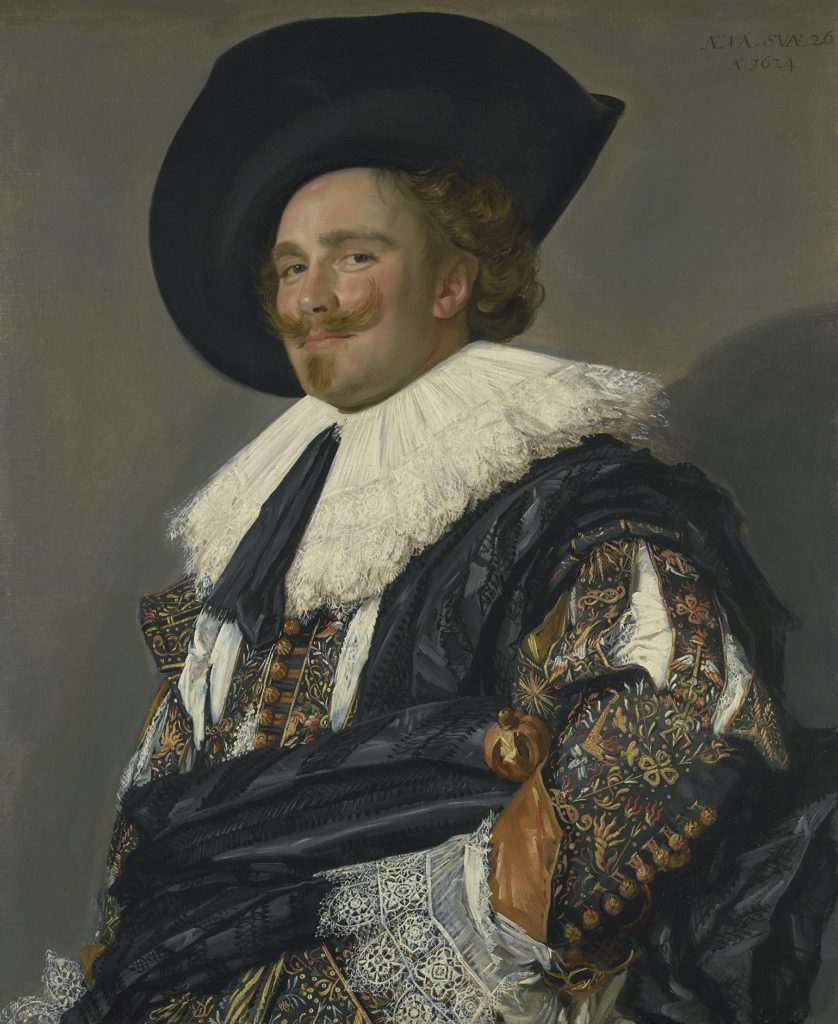
2. Franz Hals, The Laughing Cavalier
The Laughing Cavalier is the second most famous painting in the Wallace Collection. It was painted by Franz Hals, a preeminent Dutch Golden Age painter.
It’s an exuberant half length portrait of a young man, executed in a bravura style. Art historians don’t know who the painting depicts. The subject is dressed in rich and flamboyant clothing, suggesting he is a rich merchant or prominent citizen.
The clothes provide some clues.They are embroidered with symbols of courtship. This suggests the painting may have been a betrothal portrait.
The title claims the man is laughing. And the arrogant pose in the portrait certainly conveys a sense of jocularity and swagger.
But that may just be the image created by the shape of his distinctive mustache. In reality, he is neither laughing nor a cavalier.
In the painting, you can see Hals’ trademark use of various shades of black. His sumptuous and fluid textures give the painting a photographic quality.
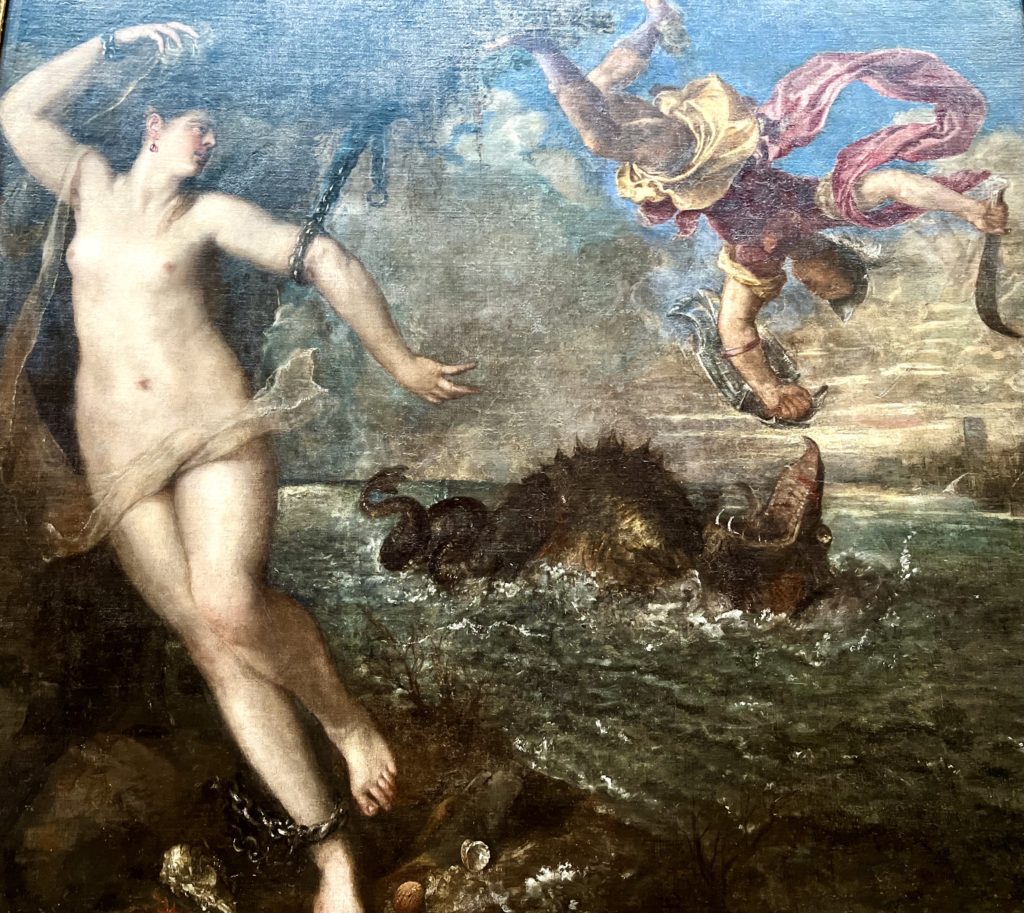
3. Titian, Perseus and Andromeda
This painting is one of a series of six paintings that were commissioned by the King of Spain. He stipulated that Titian must paint mythological scenes.
But he gave Titian free reign to chose the subject matter. Titian’s paintings, with themes of love and death, rank among the most significant paintings of the 16th century.
This Wallace Collection painting is from Ovid’s Metamorphoses. In a moment of high drama, you see Perseus swooping down to rescue Andromeda from a sea dragon.
Originally, Perseus was on the right, not the left. In its day, it was considered an avant grade way of painting nudes.
The king kept the painting in his bathroom. Unfortunately, this caused water damage. When the king died, the painting was sold off at auction and purchased by Richard Wallace.
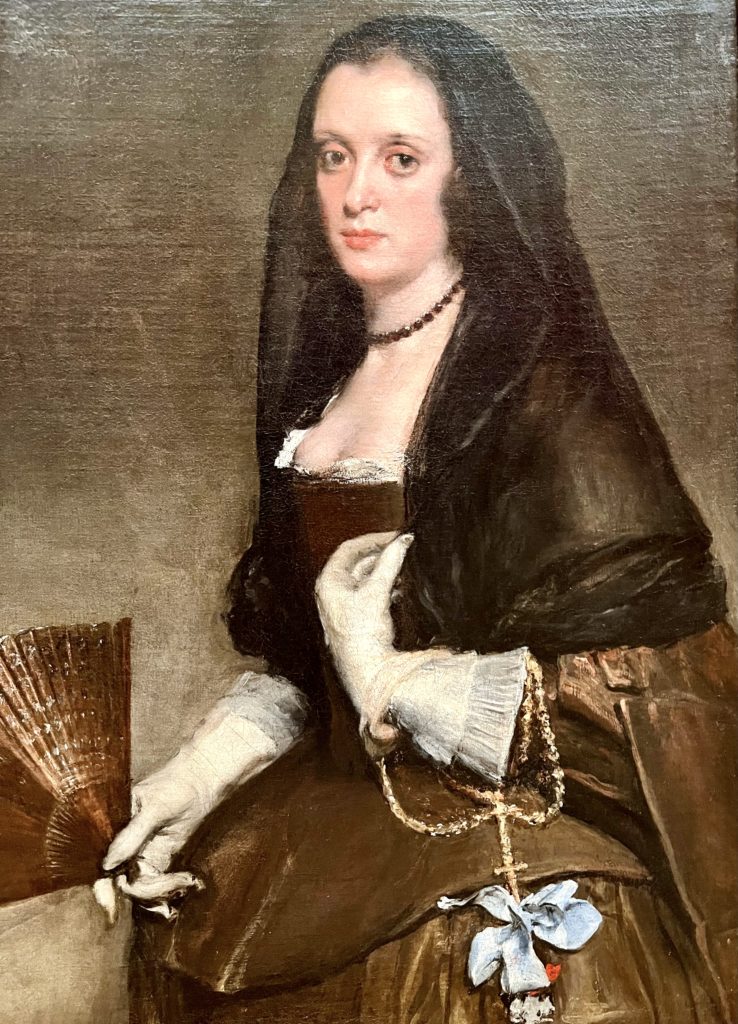
4. Velazquez, Lady With The Fan
Velazquez is the most famous painter of the 18th century Spanish Golden Age. The king liked him so much he was appointed the first court painter.
The Lady With The Fan is Velazquez’ most famous painting after Les Meninas, which is in the Prado Museum in Madrid.
The painting captures a beautiful young woman in a dark outfit. Her hair is covered and she wears a black necklace.
We don’t know who she is. Art historians have debated whether she is French of Spanish. The lady is outfitted with rich accessories, including a turtle shell fan and jewels.
The background is stark, as was typical for Velazquez portraits.
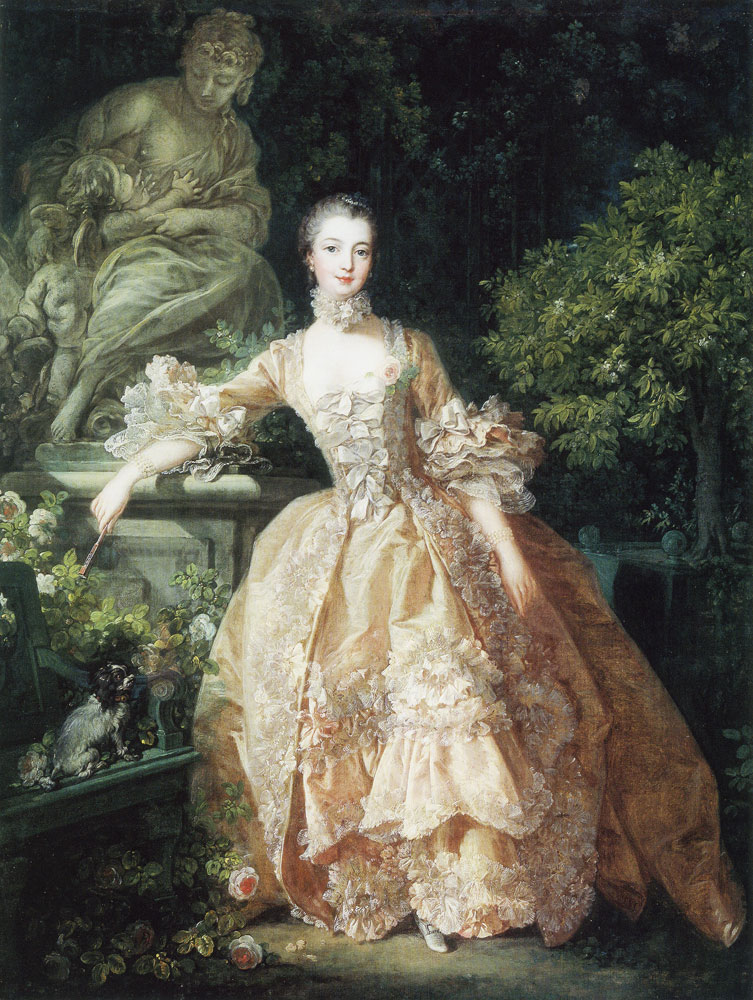
5. Boucher, Madame de Pompadour
This beautiful Boucher painting depicts Madame de Pompadour, who was the official mistress of Louis XV. It was the last of 7 paintings Boucher made of her.
Because of her great political intelligence, Madame de Pompadour successfully built and defended a highly influential position at the French court to a degree that was unusual for a mistress.
In the painting, Madame de Pompadour stands in an idealized garden. She is accompanied by her spaniel, who symbolizes fidelity.
The parkland setting stresses the natural and honest character of her relationship to the king. At that point, her relationship with the king was platonic.
She chose Boucher to paint her and became a generous patron to him. The artist epitomized the inimitable style of mid 18th century French art.
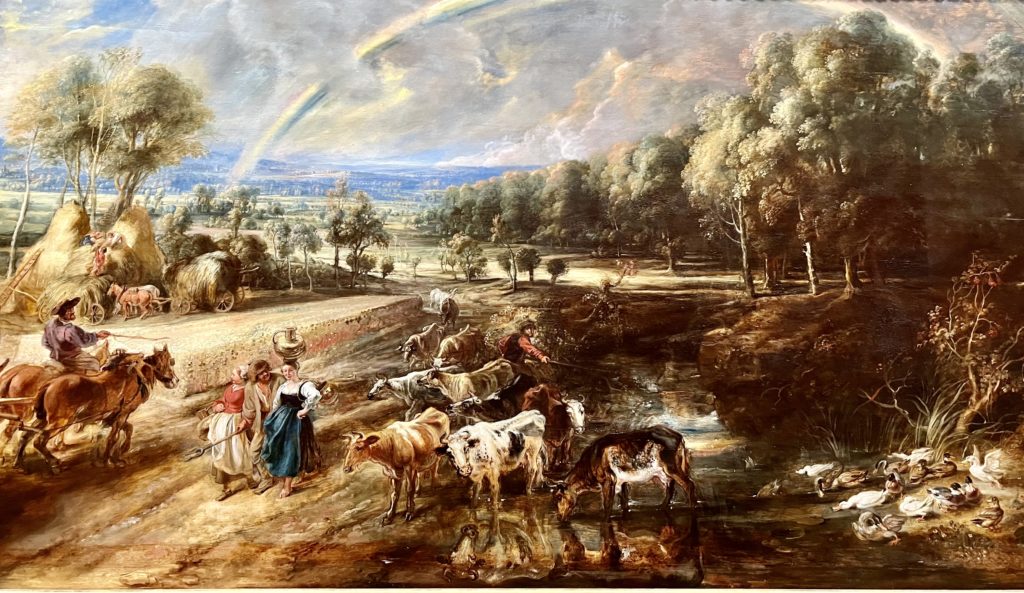
6. Ruben’s Rainbow Landscape
This is an important Rubens painting because he almost never painted landscapes. When he did, he kept them in his personal collection.
The Rainbow Landscape shows Ruben’s personal estate on a late summer afternoon. It’s depicted in an idealized way. It’s a happy painting, with the rainbow as a sign of protection.
The fourth marquess acquired the painting in 1856, outbidding the National Gallery of Art. You can still visit Ruben’s estate in Antwerp.
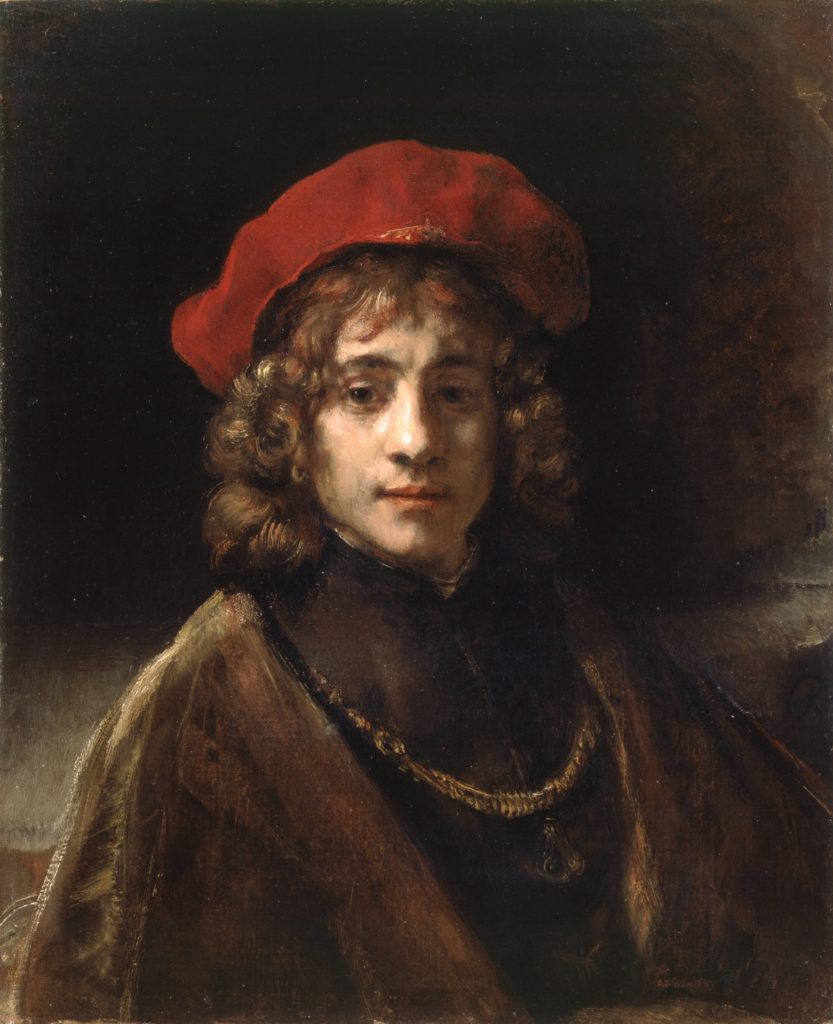
7. Rembrandt Paintings
There are two Rembrandt paintings in the East Galleries on the second floor. They hang opposite one another. One is a self portrait of Rembrandt and one is a portrait of the artist’s son.
The self portrait was recently attributed to Rembrandt. It’s set in an usual semi- circular shape, probably due to being cut to fit a particular location.
Titus the Artis’s Son depicts the artist’s 15 year old teenage son. He’s portrayed in historical robes and gold chains, recalling 16th century Venetian portraits. The young man has a serious gaze.
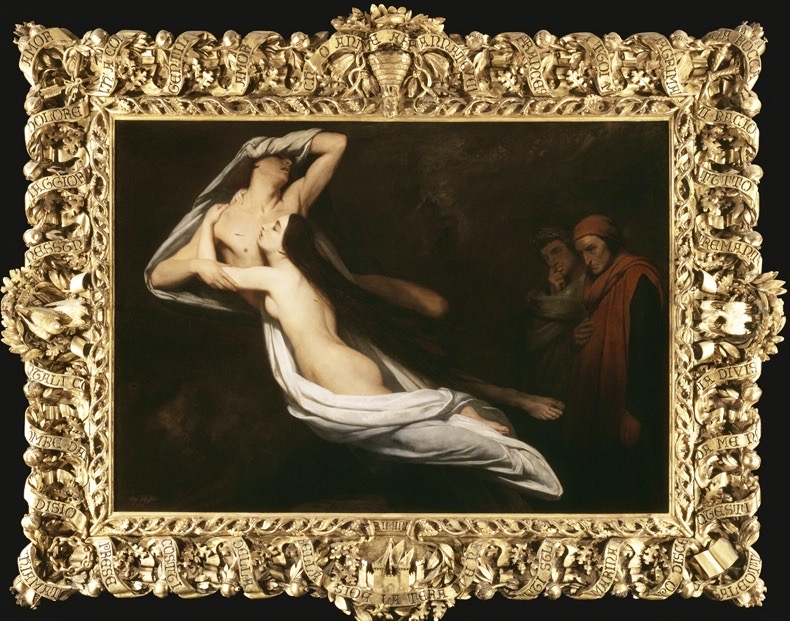
8. Ary Scheffer, Francesca di Rimini
The artist Ary Scheffer enjoyed enormous success with sentimental and religious scenes. Francesca da Rimini was one of his most admired works. His friend, the novelist George Eliot, claimed that she could “look at it for hours.”
The subject is from Dante’s Inferno. The unique painting shows Dante and his guide, the Roman poet Virgil, during their passage through Hell. They look on the tragic figures of Paolo and Francesca, condemned to Hell’s second circle.
Francesca was forced to marry the hideous Gianciotto da Rimini. But she fell in love with his handsome younger brother, Paolo, instead. Gianciotto murdered them after he saw Paolo kiss Francesca.
The painting has a remarkable frame that complements its subject. It was likely designed by Félicie de Fauveau.
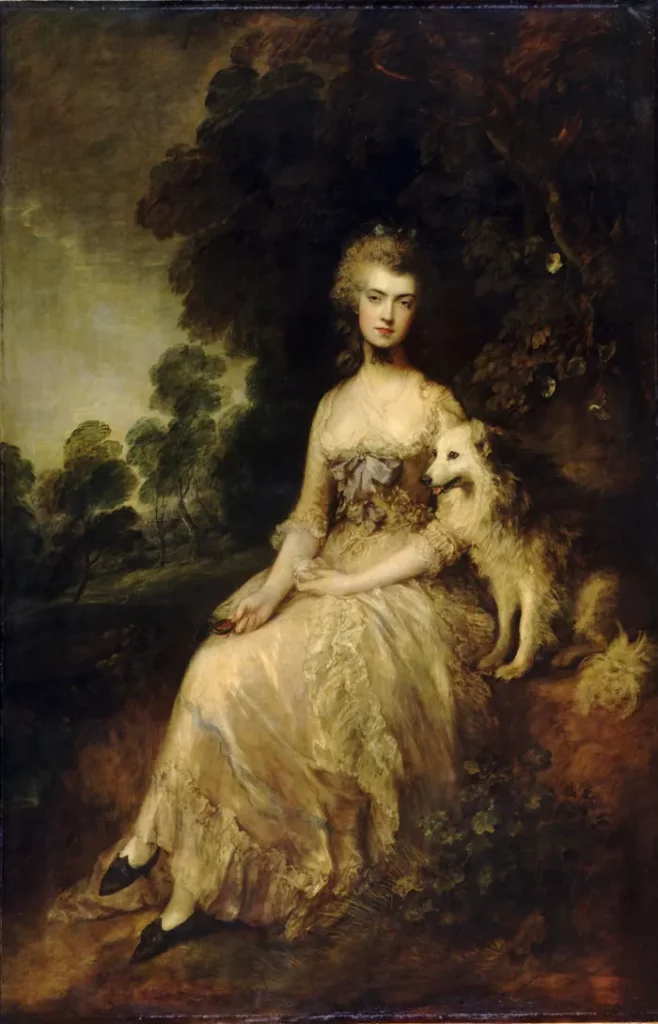
9. Gainsborough, Mrs. Robinson
This painting is by the English artist Thomas Gainsborough. He was the best known English artist of the 18th century. He was famed for his outstanding innovations and techniques in both pastoral landscapes and portraiture.
In this painting, Gainsborough depicts the actress Mary Robinson. She’s sits in an atmospheric landscape with her dog.
The Prince of Wales (later George IV) became infatuated with Robinson when he saw her paying Perdita in Shakespeare’s The Winter’s Tale. The prince sent her a miniature of himself with a paper heart declaring his love. She had it set in diamonds and holds it in her hand in the painting.
Gainsborough’s fluid brushwork and loose composition are notable in the portrait. The sitter appears to melt into the landscape, imparting a poetic dimension to the picture.
The portrait is recognized today as one of the artist’s masterpieces. But Gainsborough withdrew it from the Royal Academy exhibition in 1782 after it was criticized for not conveying an exact physical likeness of the sitter.
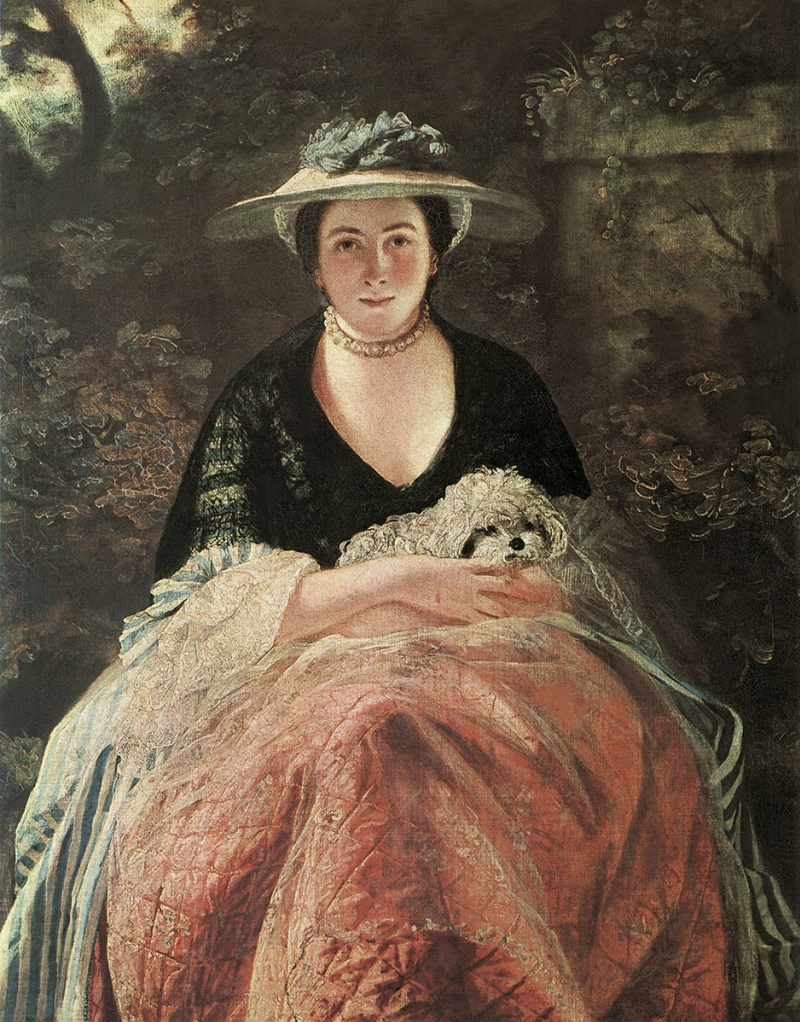
10. Joshua Reynolds, Nelly O’ Brien
Reynolds was the leading portraitist of the 18th century. He invigorated the genre and raised its status to that of religious and historical works.
In this painting, Reynolds depicts Nelly O’Brien. She was a well known beauty and courtesan. She was also a friend of Reynolds and modeled for him frequently.
There is no evidence that the portrait was painted on commission. Reynolds departed somewhat from his typical Old Masters style. He used a more experimental style of image.
Reynolds shows O’Brien clad in a wide brimmed hat directly gazing at the viewer. You can see the soft and luminous quality of light on the sitters upper torso.
The portrait was recently conserved. It’s one of Reynolds’ most popular paintings.
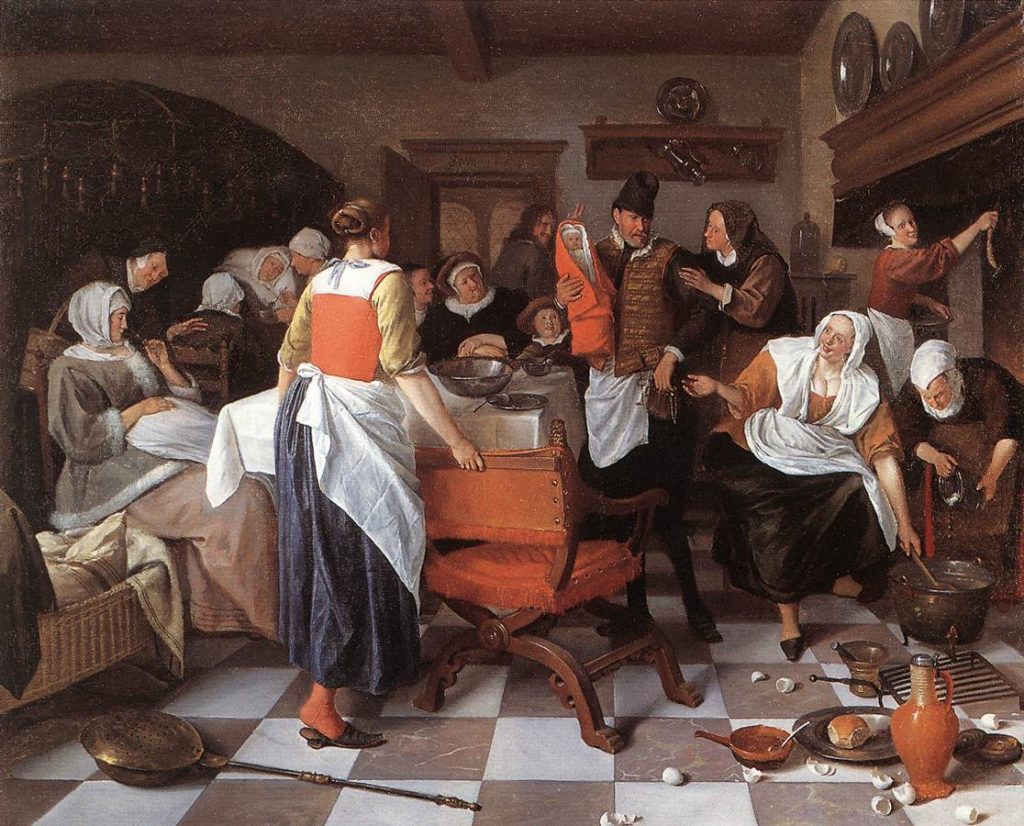
11. Jan Steen, Celebrating The Birth
Jan Steen was the humorist among Dutch Gold Age painters. He created nearly 800 paintings, most with a moral beneath the wit.
In 17th century Holland, the birth of a child was celebrated with a party. Intended to be a sober affair, the celebration often turned raucous.
In the painting, the mother lies in bed. The apparent father holds the baby wrapped in a red blanket.
Behind the baby, another man makes the sign of cuckold’s horns behind the baby’s head. This may be a self portrait of Steen.
The cuckold is further emasculated with an apron and purse string around his waist.
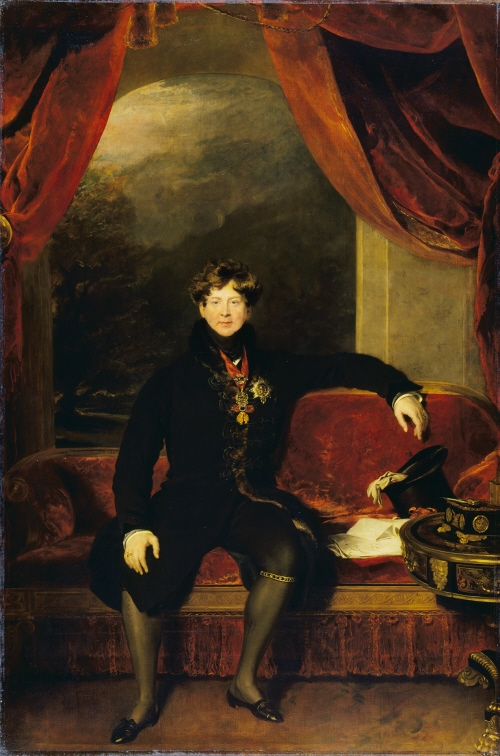
12. Thomas Lawrence, George IV
This gigantic portrait of George IV is at the east end of the Great Gallery. It’s almost as if the king is presiding over the grand room. It was painted by the king’s principal painter, Thomas Lawrence.
Like Richard Wallace, George IV was also an art collector. Many of his acquisitions are in Blenheim Palace and Windsor Palace.
George commissioned this portrait for his mistress. It’s not really an accurate depiction. George was enormously obese and he’s wearing a brown wig.
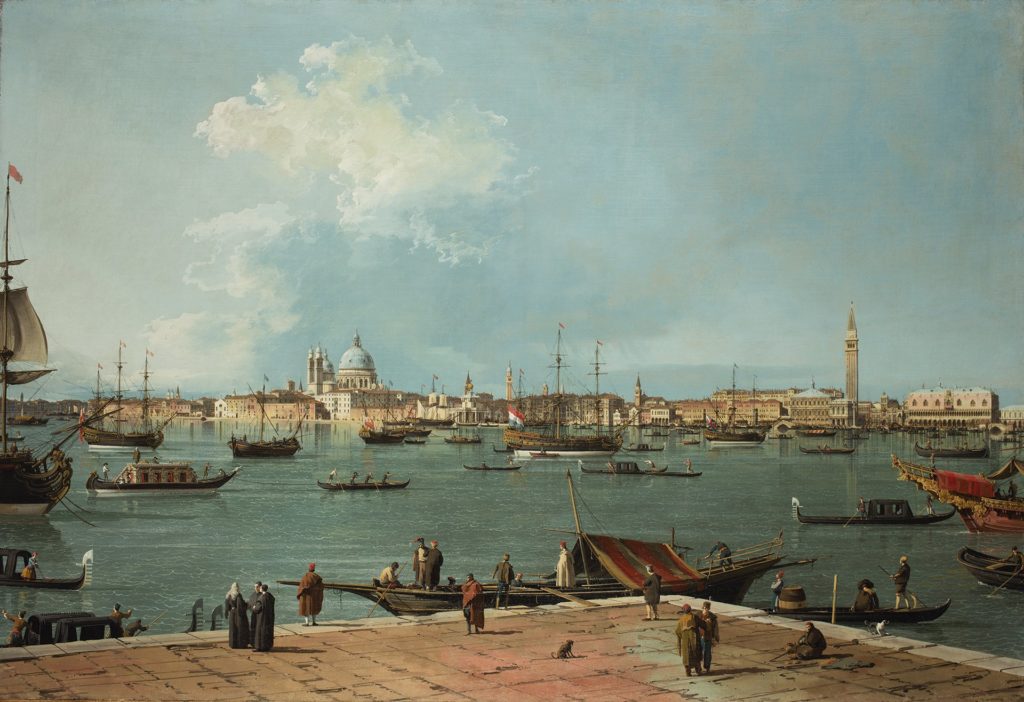
13. Canaletto Paintings
The Wallace Collection has a bevy of Canaletto paintings. They’re mostly in the West Gallery I. But there are several in the Great Gallery as well.
Canalleto was an outstanding Venetian painter of the 18th century. He was renowned for his carefully staged scenes of Venice. Many of his works were painted for tourists who had visited the city.
READ: 2 Day Itinerary For Venice
The Canaletto paintings were among the earliest pieces added to The Wallace Collection.
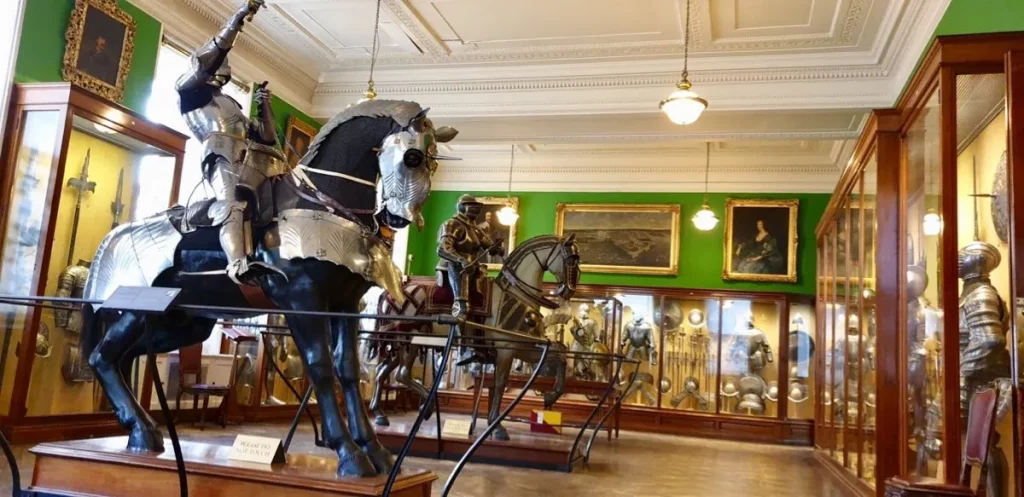
14. Oriental and European Armories
If you are interested in military history, you will be enamored with the Wallace Collection’s princely collection of arms and armor. It’s one of the best in the world.
The Oriental Armory has a collection of Ottoman, Middle Eastern, and Asian arms, amor, and other works of art. It was largely assembled by the fourth marquess. You’ll see swords, daggers, helmets, armor, and other objects.
The European Armory houses Medieval and Renaissance artifacts from the 10th to the 16th centuries. Richard Wallace acquired these works from the Minister of Fine Arts to Napoleon.
The Renaissance armor is especially spectacular. In that era, powerful noblemen commissioned elaborately decorated arms. They were just in war, but also in jousts and festivals.
One of the most famous pieces is a complete 15th century set of equestrian armor, one of only three in the world. Aside from armor, you’ll find an array of pistols, canons, swords, and tools.
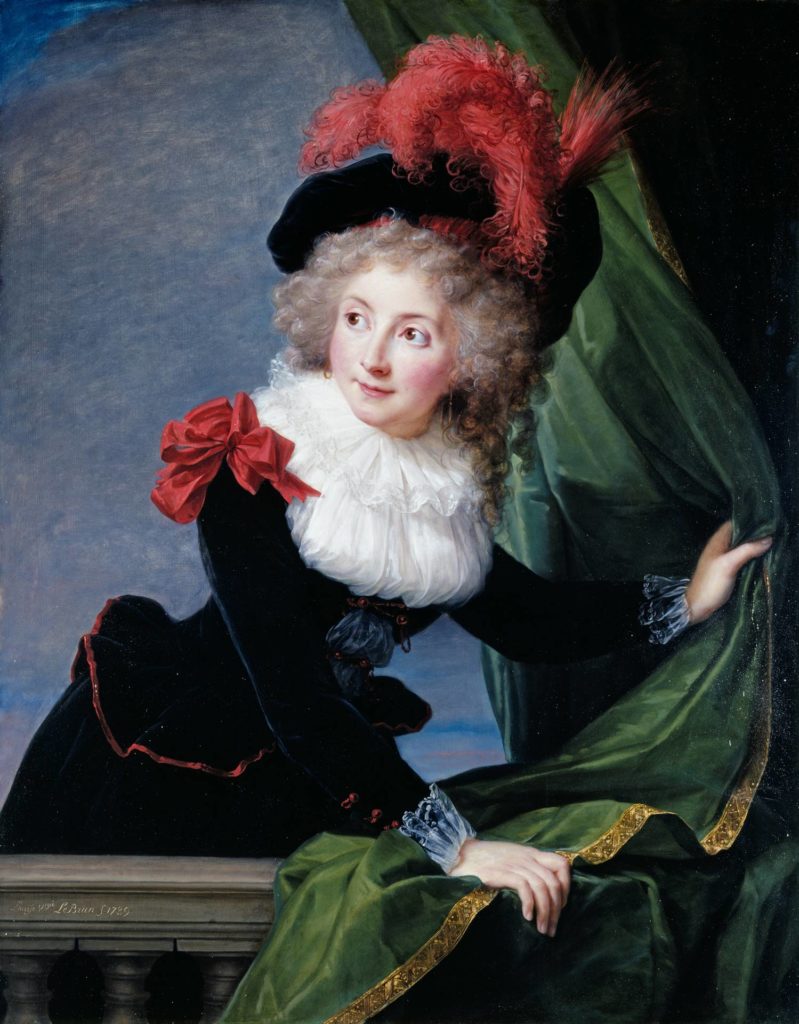
15. Marie Antoinette Study
The Wallace Collection also boasts beautiful examples of the French decorative arts. Many of them were purchased from the Palace of Versailles after the French Revolution.
One particular highlight is a boudoir-like suite of furniture once owned by Marie Antoinette. It comes from her pleasure palace, the Petit Trianon. You’ll find it in the Study.
The Study was Richard Wallace’s private reading room. The furniture is surrounded by Sevres porcelain and other French decorative arts from the second half of the 18th century.
There’s also a lovely portrait by Elizabeth-Louise Vige Le Brun. She was Marie Antoinette’s official portraitist. And a beautiful Fragonard painting called The Souvenir.
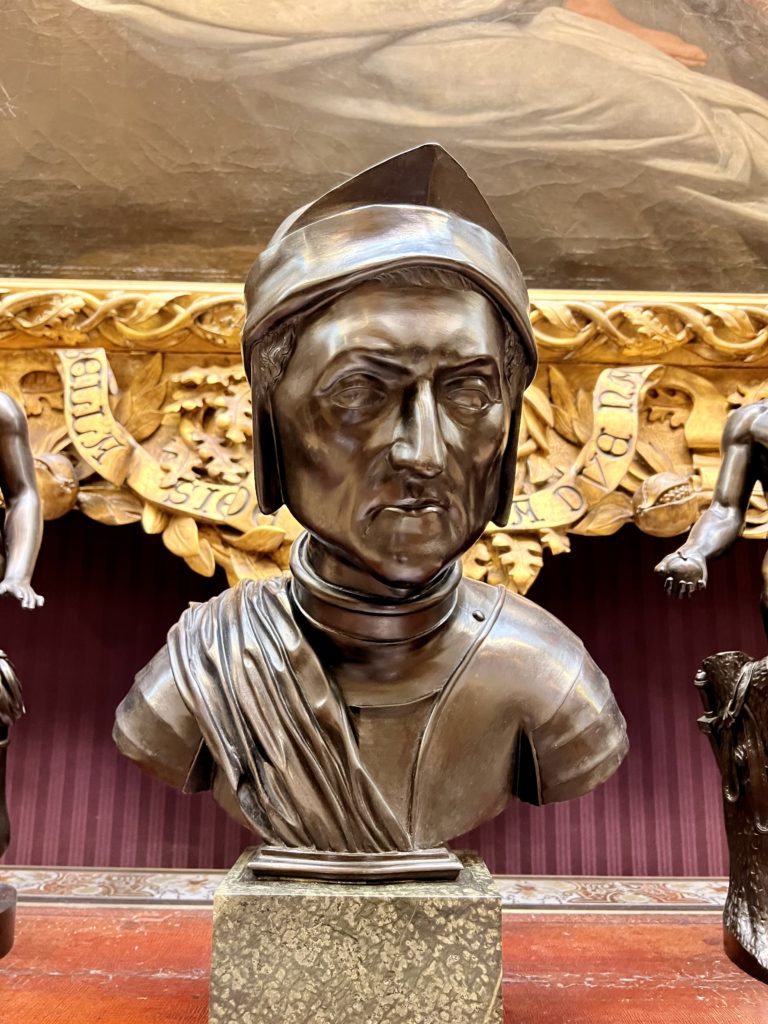
Practical Information and Tips For Visiting The Wallace Collection
Address: Hertford House, Manchester Square, London W1U 3BN. The museum is just a couple blocks from Oxford Street.
Entry fee: free
Hours: Open daily 10:00 am to 5:00 pm
How Long To Spend: I would give yourself at least 90 minutes. I was there for 3 hours because there is just so much to see.
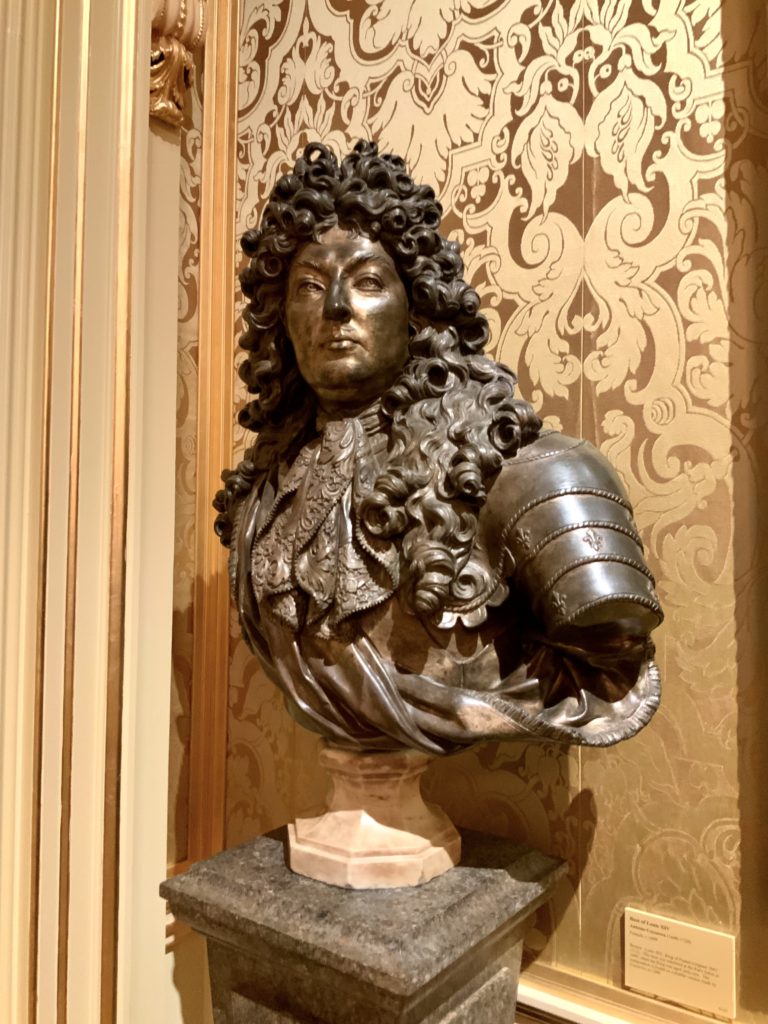
Pro Tips:
There’s no audio guide or explanatory signage at The Wallace Collection. But you can download the Bloomberg Connects app with a QR code. That will give you information on specific paintings.
Tube Stations:
The nearest tube stations are Bond Street (Central Line), Baker Street (Bakerloo Line, Jubilee Line, and Circle Line), and Oxford Circus (Bakerloo Line, Central Line & Victoria Line). All are about 10 to 15 minutes away from the museum on foot.
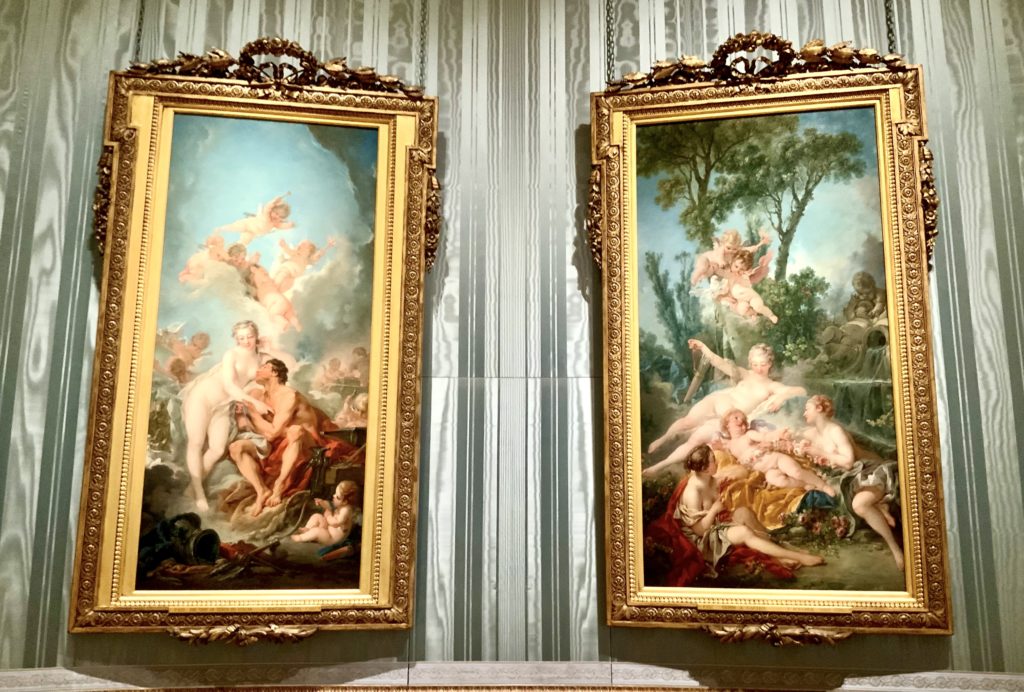
Museum Cafe: The museum has a lovely secluded cafe, set under a skylight. It’s the perfect spot for brunch or lunch. Or to take a break midway through visiting the collection.
I hope you’ve enjoyed my guide to The Wallace Collection. You may enjoy these other London travel guides:
- 5 Days in London Itinerary
- Guide To Free Museums in London
- Guide To the National Gallery of Art
- Guide To the Churchill War Rooms
- Tourist Traps To Avoid in London
- Guide To the Tower of London
- Guide To Hampton Court Palace
- Guide To Hatfield House
- Guide To The Henry VII Chapel
If you need a guide to the The Wallace Collection for your London visit, pin it for later.
